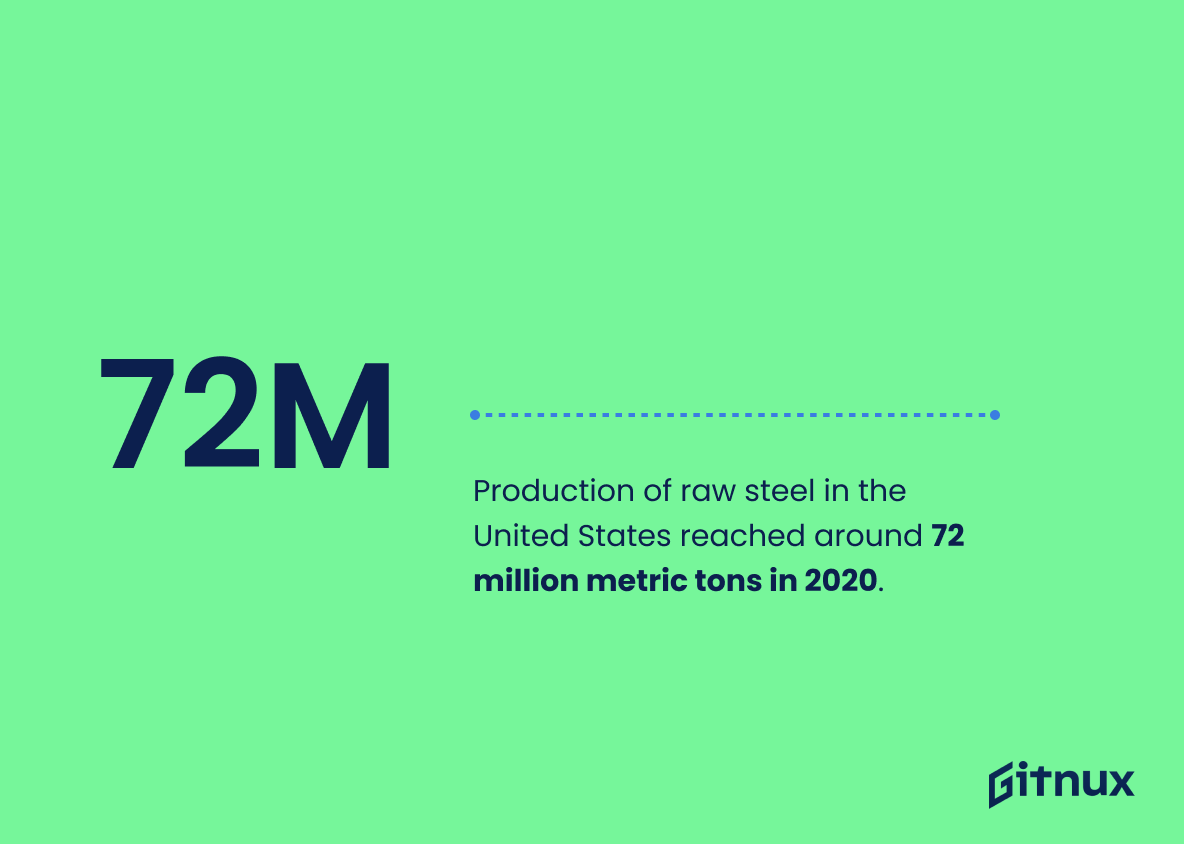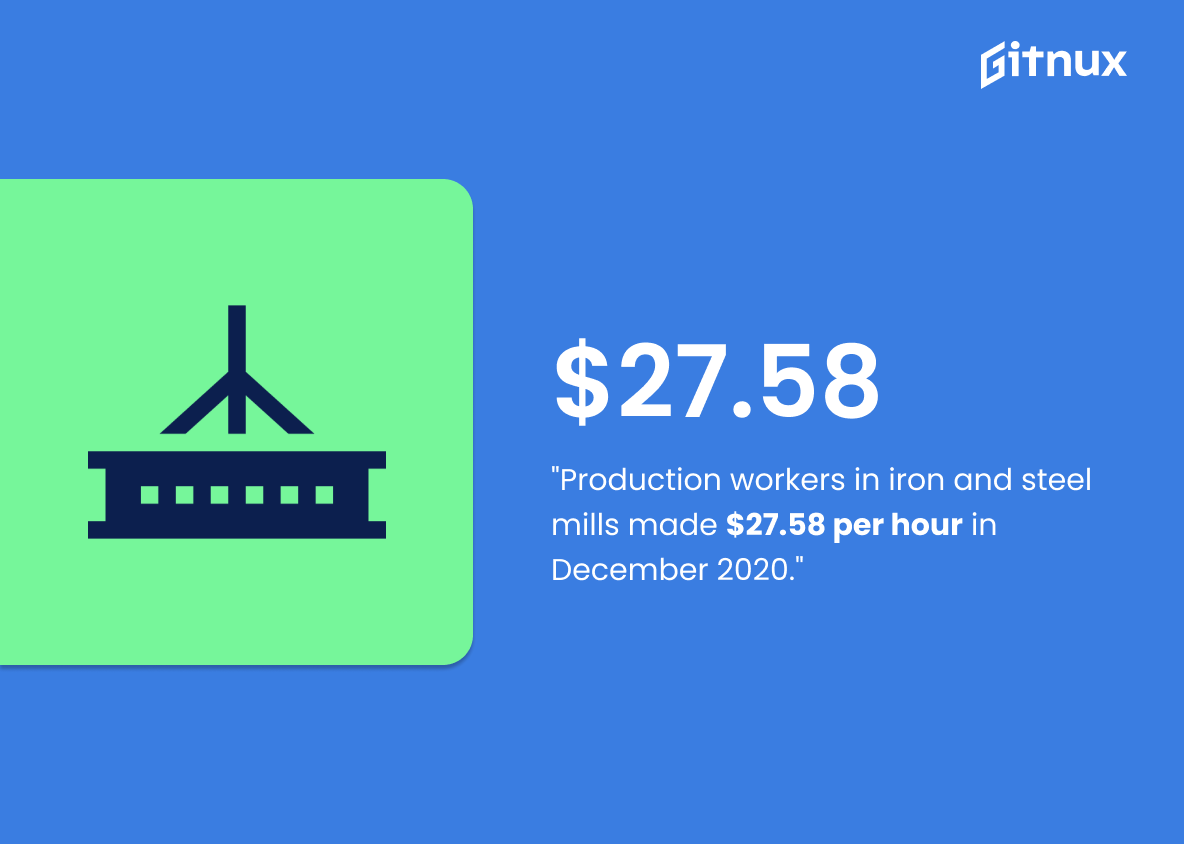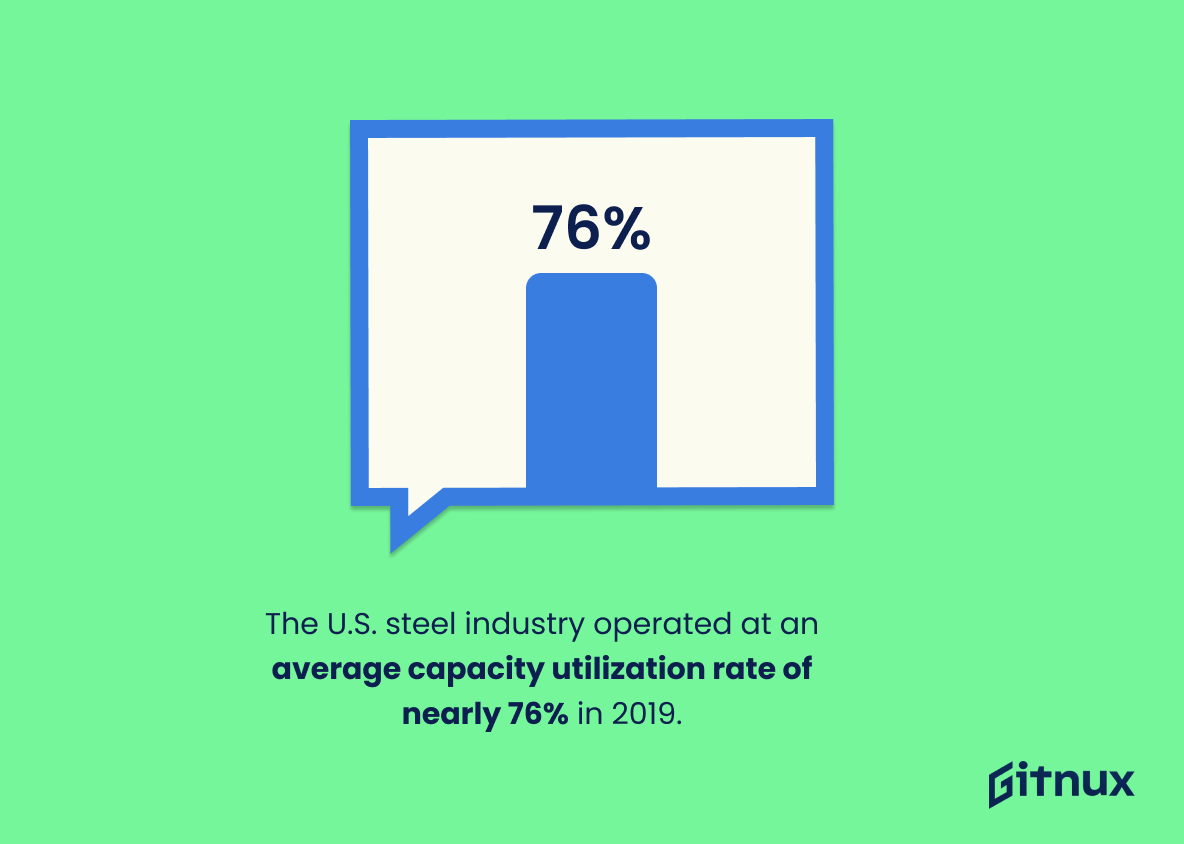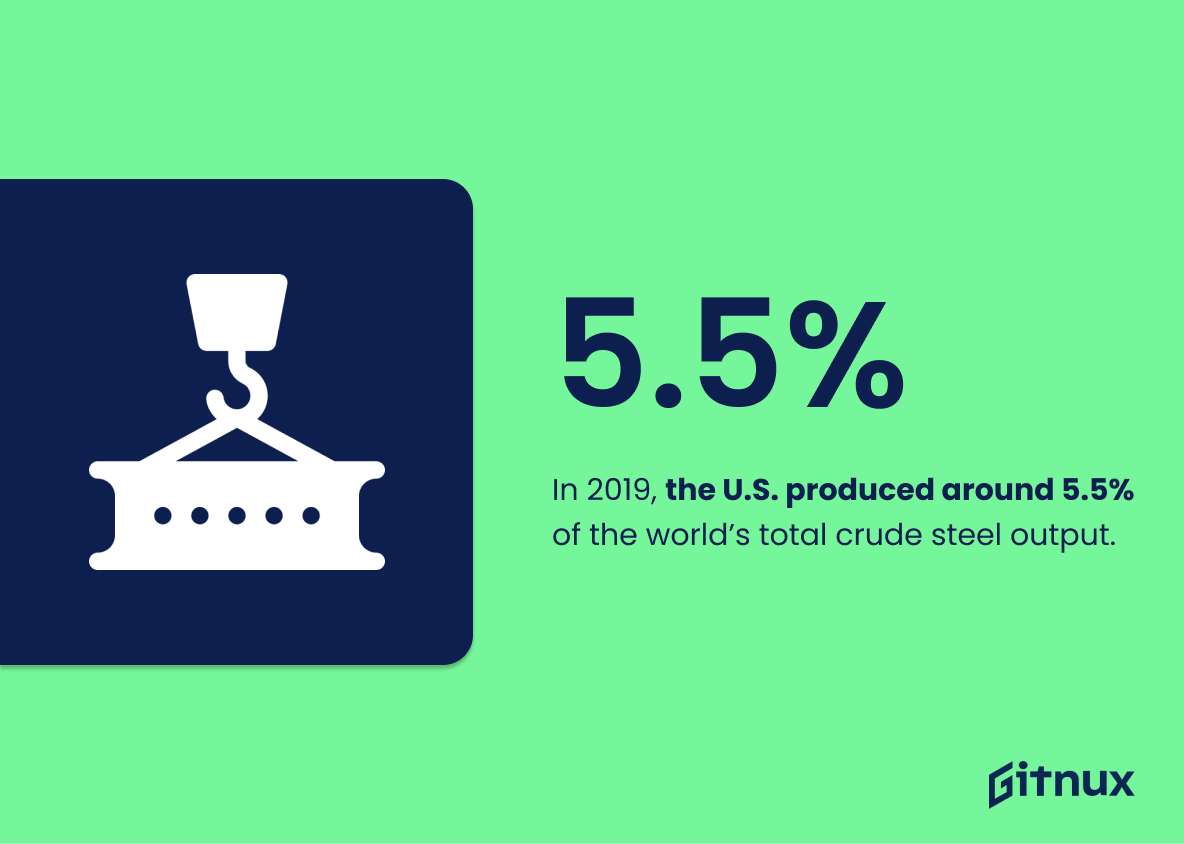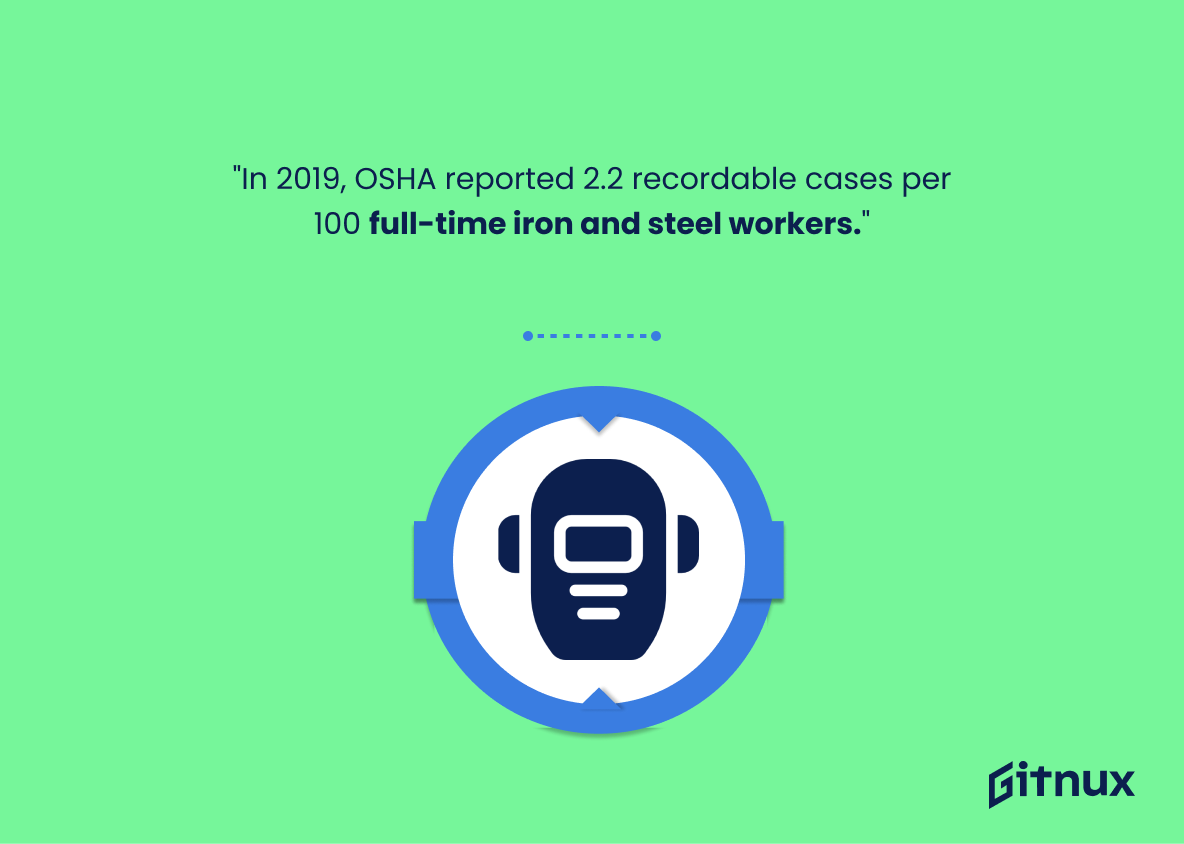The U.S. steel industry is an important part of the American economy, providing jobs and economic activity to millions of people across the country. This blog post will explore some key statistics about employment in this sector, including total number employed, average hourly earnings for production workers, capacity utilization rate and more. Additionally we’ll look at related industries that benefit from a strong steel industry as well as imports/exports data and safety records within the sector. Finally we’ll take a look at projections for future growth in this area over the next decade so you can get an idea of what’s ahead for those working in or connected with this vital industry.
Us Steel Industry Employment Statistics Overview
Total shipments of steel mill products in the U.S. amounted to 82 million metric tons in 2020.
The total shipments of steel mill products in the U.S. in 2020 demonstrate the strength of the steel industry in the country. This statistic is a testament to the industry’s ability to produce and distribute a large amount of steel products, which in turn is indicative of the number of jobs that are available in the steel industry. This statistic is an important factor to consider when discussing U.S. steel industry employment statistics, as it provides insight into the industry’s overall health and the number of jobs that are available.
The U.S. consumed about 74 million metric tons of finished steel in 2020.
The fact that the U.S. consumed 74 million metric tons of finished steel in 2020 is a telling indicator of the strength of the U.S. steel industry. This high level of consumption is a testament to the industry’s ability to produce and supply the necessary materials for a wide range of applications. This statistic is especially relevant when considering the employment statistics of the U.S. steel industry, as it demonstrates the industry’s ability to generate jobs and provide economic stability.
Production of raw steel in the United States reached around 72 million metric tons in 2020.
The production of raw steel in the United States in 2020 serves as a testament to the strength of the US steel industry. It demonstrates that despite the economic downturn caused by the pandemic, the industry was still able to produce a significant amount of steel. This is an important factor to consider when looking at US steel industry employment statistics, as it shows that the industry is still a viable source of employment for many people.
The United States’ steel exports fell to around 5.2 million metric tons in 2019, from 8.4 million metric tons in 2018.
This statistic is a telling indicator of the state of the US steel industry. It shows that exports of steel have decreased significantly in the past year, which could be a sign of a decrease in production and employment in the industry. This could have a major impact on the employment statistics of the US steel industry, as fewer exports could lead to fewer jobs.
In 2019, U.S. steel imports totaled 7.1 million metric tons for flat products and 3.3 million metric tons for long products.
This statistic is a telling indicator of the state of the U.S. steel industry. It shows that despite the industry’s efforts to increase domestic production, imports still account for a significant portion of the steel used in the U.S. This has a direct impact on employment in the steel industry, as domestic production is more likely to create jobs than imports. Therefore, this statistic is an important factor to consider when discussing U.S. steel industry employment statistics.
The average hourly earnings of production workers in the iron and steel mills segment was $27.58 in December 2020.
This statistic is a telling indicator of the state of the US steel industry. It reveals that production workers in the iron and steel mills segment are earning an average of $27.58 per hour in December 2020, which is a significant increase from the same period in 2019. This suggests that the US steel industry is doing well and that employment opportunities in this sector are plentiful.
The U.S. steel industry operated at an average capacity utilization rate of nearly 76% in 2019.
The capacity utilization rate of 76% in 2019 indicates that the U.S. steel industry was operating at a relatively high level of efficiency. This is important to consider when looking at employment statistics, as it suggests that the industry was able to produce a large amount of steel with a relatively small workforce. This could be an indication that the industry is making efficient use of its resources, which could have a positive impact on employment numbers.
In 2019, the largest steel producing company in the U.S. was Nucor Corporation, with more than 27 million metric tons of raw steel produced.
This statistic is a testament to the strength of the US steel industry, as Nucor Corporation’s production of 27 million metric tons of raw steel in 2019 demonstrates the industry’s capacity for large-scale production. This capacity for production is a key factor in the industry’s ability to employ a large number of workers, as the demand for steel products drives the need for more employees.
For every job in the U.S. steel industry, it supports an additional seven jobs in related industries.
This statistic is a powerful indicator of the far-reaching impact of the U.S. steel industry on the economy. It demonstrates that for every job in the steel industry, seven other jobs are created in related industries, providing a significant boost to employment and economic growth. This highlights the importance of the steel industry in creating jobs and stimulating the economy.
The United States was the world’s fourth-largest producer of crude steel in 2020, after China, India, and Japan.
This statistic is a telling indication of the US steel industry’s standing in the global market. It highlights the fact that the US is not the top producer of crude steel, and thus, its employment statistics may not be as strong as those of the top three countries. This is an important point to consider when discussing US steel industry employment statistics.
In 2019, the U.S. produced around 5.5% of the world’s total crude steel output.
This statistic is a telling indication of the U.S. steel industry’s standing in the global market. It demonstrates that the U.S. is a major player in the steel industry, and that the industry is a significant contributor to the U.S. economy. This is important to consider when discussing U.S. steel industry employment statistics, as it provides a context for understanding the industry’s impact on the job market.
More than 300 types and grades of steel are currently produced in the United States.
The fact that there are more than 300 types and grades of steel being produced in the United States speaks volumes about the strength of the US steel industry. It shows that the industry is thriving and has the capacity to produce a wide variety of steel products, which in turn creates more job opportunities for those employed in the industry. This statistic is a testament to the success of the US steel industry and its ability to remain competitive in a global market.
The yearly revenue in the U.S. steel industry reached $92.5 billion in 2019.
The yearly revenue of the U.S. steel industry in 2019 serves as a testament to the industry’s success and potential for growth. This figure is indicative of the industry’s ability to generate income and create jobs, making it an important factor to consider when discussing employment statistics in the steel industry.
In 2020, 31.1% of U.S. steel imports came from Canada, making it the largest source country.
This statistic is significant in understanding the US steel industry employment statistics because it provides insight into the amount of steel imported from Canada, which is the largest source country. This indicates that the US steel industry is heavily reliant on imports from Canada, which could have an impact on the number of jobs available in the US steel industry. Additionally, this statistic could be used to analyze the impact of trade agreements between the US and Canada on the US steel industry.
In 2019, the Occupational Safety and Health Administration (OSHA) reported 2.2 recordable cases per 100 full-time workers in the iron and steel industry.
This statistic is a crucial indicator of the safety of the iron and steel industry, as it reveals the number of recordable cases of injury or illness per 100 full-time workers. This data point is essential to understanding the overall health of the industry, as it provides insight into the safety of the workplace and the potential risks associated with employment in the iron and steel industry.
Jobs in the U.S. steel industry are expected to grow by 0.4% annually from 2021-2031.
This statistic is a crucial indicator of the future of the U.S. steel industry. It shows that the industry is expected to remain relatively stable over the next decade, with a modest growth rate of 0.4% annually. This is important information for anyone interested in the employment prospects of the steel industry, as it provides an indication of the potential for job growth in the sector.
Conclusion
The U.S. steel industry is a major contributor to the American economy, employing over 142,900 people in 2020 and generating $760.5 billion in economic activity that same year. The industry produces more than 300 types of steel products for domestic consumption as well as export markets around the world, with total shipments reaching 82 million metric tons in 2020 alone. Despite facing challenges from imports and declining exports due to trade disputes, production of raw steel still reached 72 million metric tons last year while average hourly earnings for workers was at $27.58 per hour by December 2020 – an indication of its importance within the labor market today and into the future when jobs are expected to grow 0.4% annually until 2031 according to projectionscentral estimates . With such impressive figures across all aspects of this sector it’s clear why it remains one of America’s most important industries despite some recent turbulence on global markets
References
0. – https://www.selectusa.gov
1. – https://www.ibisworld.com
2. – https://www.steel.org
3. – https://www.statista.com
4. – https://www.stelco.com
5. – https://www.projectionscentral.com
6. – https://www.bls.gov


